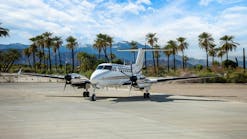Past Contact: Mary Solbrig
Gia Koontz writes regularly for AMT magazine usually about aviation mechanics from the early years. This is a beautiful article about a female mechanic from long ago.
— Ceci Stratford
This woman was a legend in the early days of aviation mechanics. It’s a very interesting read.
— Kathryn Presson
The [Solbrig’s] Roberts engine most likely used was the two-cycle four-cylinder 50-hp model, 4.5 bore, five stroke. It had no exhaust manifold, so the exhaust barked right out of the bottom cylinder ports, making a terrible racket.
I have never liked two-cycle engines ever since trying to start old Elko outboards every summer, with great difficulty. Same with the early lawn mowers. In your story you mention the engine would run fine one day, and not the next, that’s how they are.
— Chet Peek
Chet Peek has written a dozen aviation history books mainly about aircraft that he has built and/or restored and then flown. He lives in Oklahoma.
AMT blog
Just wanted to give you a big thumbs up for the AMTonline blog! It is a great site and I’ve encouraged our students to visit there by putting a link to it on our school’s blog (http://aimindy.wordpress.com).
I look forward to all the AMT industry news in 2008. There are some real issues happening in this industry and you (and your team) do a great job covering all of it. Keep up the great work!
— Scott Hopper, Director of Admissions, Aviation Institute of Maintenance, Indianapolis, IN
Accountable Manager
Great article by Bill O’Brien. But I noticed Q.6 answer was wrong. Should it have been D. 21, 43 and 91? I don’t remember anything about Part 121 being on an Airworthiness Certificate. I don’t think Bill made this mistake. Thanks and keep up the good articles.
— Kirk Bajdek
Answers to the article can be found on www.AMTonline.com, following the article in the January/February issue.
October issue
I enjoy reading your magazine each month. The articles have very good information and the different subject matter you cover each month. After reading the article by Bill O’Brien, the two ACs Mr. O’Brien referenced were wrong (AC20-115 and AC20-177A). AC20-115 covers Radio Technical Communications for Aeronautical, Inc. and AC20-177 is not found on the government web site. I enjoyed the article by Mr. O’ Brien, but his references were not correct.
— Robert F. Mahaffey, Aviation Safety Inspector
Correction: The ACs referred to in Fine Print: Mandatory Service Bulletins should be AC 20-114 and 20-77A. We apologize for the error.
A Matter of Insurance
After reading the concluding paragraph of your January/February 2008 article “A Matter of Insurance” I am stunned by the blame you place on Precision Airmotive’s insurance company. The civic irresponsibility of the plaintiff, his lawyers, and ignorant, easily misled juries is the problem and now you, by your shallow interpertation, have a share in it. And you represent us in the aviation industry? I don’t think so.
— Ray Konrath, A&P/IA
Bert Kinner
I read the article Bert Kinner: Mechanical Wizard (September 2007)with great interest and pleasure. I have known Donna Kinner Hunter, Bert and Cora Kinner’s daughter, for more than 10 years. Donna is a most gracious and pleasant lady who was of immeasurable help in my research for historical information about the Kinner dynasty in aviation. She provided photos, pamphlets, and descriptions in great detail that led to the development and configuration of the two Kinner Canary models noted in the AMT article. Without that help, the accuracy of many details would not have occurred in my using the peanut scale drawing published by Bill Hannan.
In addition to the Canary, I also built a 20-inch wing span model of the Kinner Sportster. This original aircraft was designed and built by Bert Kinner with folding wings for parking in limited space. (This same type of folding wings was used extensively in aircraft used by the U.S. Navy in World War II.) Donna has possession of that model.
I write this only to express my enjoyment of the article and to add more about the support of Donna in furnishing data for the models.
— George W. Crabtree, Member of the Blacksheep Exhibition Squadron and The Old Farts Flying Club, model airplane clubs





